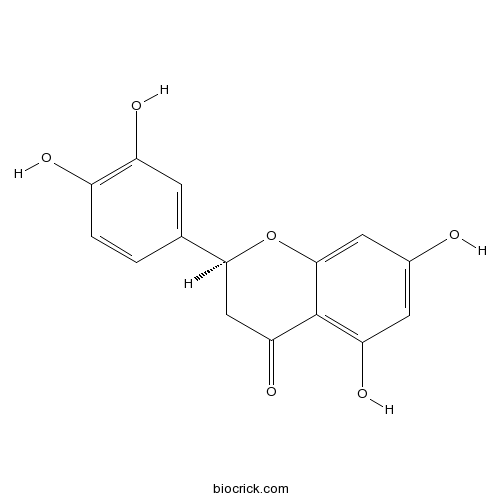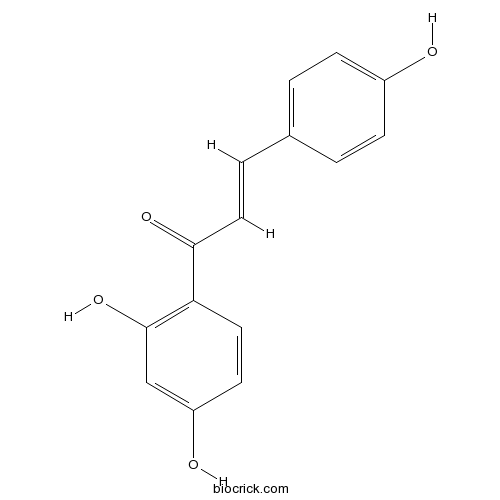Bauhinia purpurea
Bauhinia purpurea
1. The products in our compound library are selected from thousands of unique natural products; 2. It has the characteristics of diverse structure, diverse sources and wide coverage of activities; 3. Provide information on the activity of products from major journals, patents and research reports around the world, providing theoretical direction and research basis for further research and screening; 4. Free combination according to the type, source, target and disease of natural product; 5. The compound powder is placed in a covered tube and then discharged into a 10 x 10 cryostat; 6. Transport in ice pack or dry ice pack. Please store it at -20 °C as soon as possible after receiving the product, and use it as soon as possible after opening.
Natural products/compounds from Bauhinia purpurea
- Cat.No. Product Name CAS Number COA
-
BCN1209
Eriodictyol552-58-9
Instructions

-
BCN4512
Isoliquiritigenin961-29-5
Instructions

Biosynthesis of magnesium oxide (MgO) nanoflakes by using leaf extract of Bauhinia purpurea and evaluation of its antibacterial property against Staphylococcus aureus.[Pubmed: 30033274]
Nanobiotechnology has become a newly evolving field of interest in biomedical applications due to its biocompatibility and non-toxic nature towards the environment. Metal and metal oxide nanoparticles have been widely used as an antibacterial agent due to the emergence of antibiotic resistant pathogens, which leads to the outbreak of infectious diseases. In the present paper, biogenic synthesis of magnesium oxide (MgO) nanoflakes is reported by using Bauhinia purpurea leaf extract through alkaline precipitation method along with its detailed characterization. The average size of synthesized nanoflakes was found to be around 11 nm. Electron microscopy was used to investigate the morphology of the MgO nanoflakes. Additionally, the presence of antioxidants, phenolics and flavonoids in B. purpurea leaf extract has been studied by using different assays, which suggested the efficacy of leaf extract as a potential reducing agent for MgO nanoflakes synthesis. Antibacterial activity of synthesized MgO nanoflakes was investigated against Staphylococcus aureus, a gram positive bacteria known to cause various infections in humans. Results suggested the high efficacy of MgO nanoflakes as a potential antibacterial agent against S. aureus at meager dose size (250 μg/ml) and possible mode of action was investigated through surface morphology analysis of bacterial cells by field emission scanning electron microscopy.
Alleviation of heavy metal phytotoxicity in sewage sludge by vermicomposting with additive urban plant litter.[Pubmed: 29573693]
The handling of sewage sludge (SS) and urban plant litter (UPL) has become an important concern. Immobilizing heavy metals (HMs) is regarded as a necessary process for recycling SS in agriculture and forestry. Here, HM removal and HM phytotoxicity in SS during vermicomposting with different additive UPLs was investigated. The results show that vermicomposting with additive UPL significantly reduced the content of HMs, and increased organic carbon content and the proportion of macroaggregates in SS. This process also significantly immobilized HMs by mainly transforming extractable and reducible HMs into residual products. The litters of Dracontomelon duperreanum and Bauhinia purpurea increased oxidizable HMs in SS and the accumulation capacity of HMs of earthworms during vermicomposting. The Cd content in vermicomposts with the B. purpurea litter addition was decreased by 31% relative to the initial SS. Maize in vermicomposts with UPL additions, especially with B. purpurea litter, exhibited significan5tly higher seed germination rates, seedling biomass, root activity, and a lower accumulation of HMs than in SS compost without UPL additions. These results suggest that vermicomposting with additive UPL can alleviate the phytotoxicity of HMs in SS and provides a new method for simultaneously recycling SS and UPL.
Biomimetic synthesis of silver nanoparticles using flower extract of Bauhinia purpurea and its antibacterial activity against clinical pathogens.[Pubmed: 29218578]
In the present study, we have reported an eco-friendly, rapid, and simple method for the synthesis of silver nanoparticles (AgNPs) using Bauhinia purpurea flower extract as non-toxic bioreducing agent. The formation of AgNPs was confirmed by UV-visible spectroscopy, transmission electron microscopy (TEM), scanning electron microscopy and energy-dispersive spectroscopy (SEM-EDS), Fourier transform infrared spectroscopy (FT-IR), and X-ray diffraction (XRD). The synthesized AgNPs were spherical in shape with an average size of 20 nm. Furthermore, the antibacterial activities of the synthesized AgNPs (2-10 mM) against clinical pathogens, Klebsiella sp. and Staphylococcus sp., were evaluated under in vitro conditions.
Hepatoprotective action of various partitions of methanol extract of Bauhinia purpurea leaves against paracetamol-induced liver toxicity: involvement of the antioxidant mechanisms.[Pubmed: 27287196]
Methanol extract of Bauhinia purpurea L. (family Fabaceae) (MEBP) possesses high antioxidant and anti-inflammatory activities and recently reported to exert hepatoprotection against paracetamol (PCM)-induced liver injury in rats. In an attempt to identify the hepatoprotective bioactive compounds in MEBP, the extract was prepared in different partitions and subjected to the PCM-induced liver injury model in rats.
Amelioration of cisplatin-induced nephrotoxicity by ethanolic extract of Bauhinia purpurea: An in vivo study in rats.[Pubmed: 26787565]
Our objective is to study the nephroprotective activity and antioxidant potential of Bauhinia purpurea unripe pods and bark against cisplatin-induced nephrotoxicity. Healthy adult albino rats of either sex (150-200 g) were randomly divided into six groups of six animals each Group I (vehicle control) and Group II (negative control). Group III (BBE200) and Group IV (BBE400) were administered the ethanolic extract of Bauhinia purpurea bark in doses of 200 and 400 mg/kg/day p.o., respectively, and Group V (BPE200) and Group VI (BPE400) were administered the ethanolic extract of Bauhinia purpurea unripe pods at doses of 200 and 400 mg/kg/day p.o., respectively. All the treatments were given for nine days. Cisplatin in a single dose of 6 mg/kg i.p. was given on the 4 th day to all groups, except the vehicle control group. On the 10 th day, blood and urine were collected for biochemical tests and the rats were sacrificed. The kidney was removed for histology and lipid peroxidation-antioxidant test. Cisplatin caused nephrotoxicity as evidenced by elevated blood urea, serum creatinine and urine glucose, and there was decreased creatinine clearance in Group II as compared with Group I. Administration of BBE and BPE at doses of 200 and 400 mg/kg in Group III and Group VI caused a dose-dependant reduction in the rise of blood urea, serum creatinine and urine glucose, and there was a dose-dependant increase in creatinine clearance compared with Group II. There was increased catalase and glutathione and decreased malondialdehyde levels in Group II, while BBE 400 (Group IV) and BPE 400 (Group VI) treatments significantly reversed the changes toward normal values. Histological examination of the kidney revealed protection in Group IV and Group VI compared with Group II. The ethanolic extract of Bauhinia purpurea unripe pods and bark has a nephroprotective activity against cisplatin-induced nephrotoxicity in rats.
Isolation, purification and characterization of antimicrobial protein from seedlings of Bauhinia purpurea L.[Pubmed: 26780468]
A novel antimicrobial protein was purified from the seedlings of Bauhinia purpurea by sequential procedures entailing ammonium sulfate precipitation, cation exchange chromatography, preparative native-PAGE and a yield of 2.7% was obtained from the crude extract. The purified antimicrobial protein appeared as a single protein band on SDS-PAGE with the molecular mass of 20.9 kDa. Purified antimicrobial protein exhibited a potent antimicrobial activity against both Gram-positive and Gram-negative bacteria. Analysis of the trypsin digested peptides of purified protein using the MALDI-TOF MS/MS resulted in the identification of 174 amino acids. The purified protein had an optimum of pH of 5.5 and was stable at 35 °C for exhibiting its maximal antibacterial activity. The addition of metal ions such as Mn(2+) and Ca(2+) to the purified protein enhanced the antimicrobial activity of purified protein. The MIC of purified protein against Bacillus cereus and Escherichia coli were 13 μg/ml and 15 μg/ml, respectively. The purified protein digested the peptidoglycan layer of bacteria which was visualized by TEM analysis.


